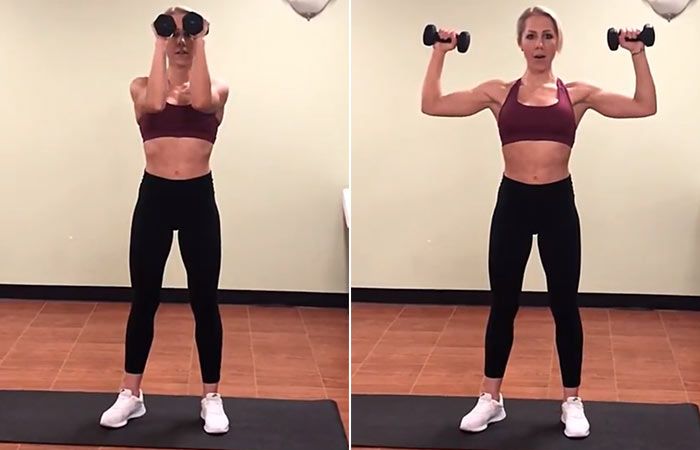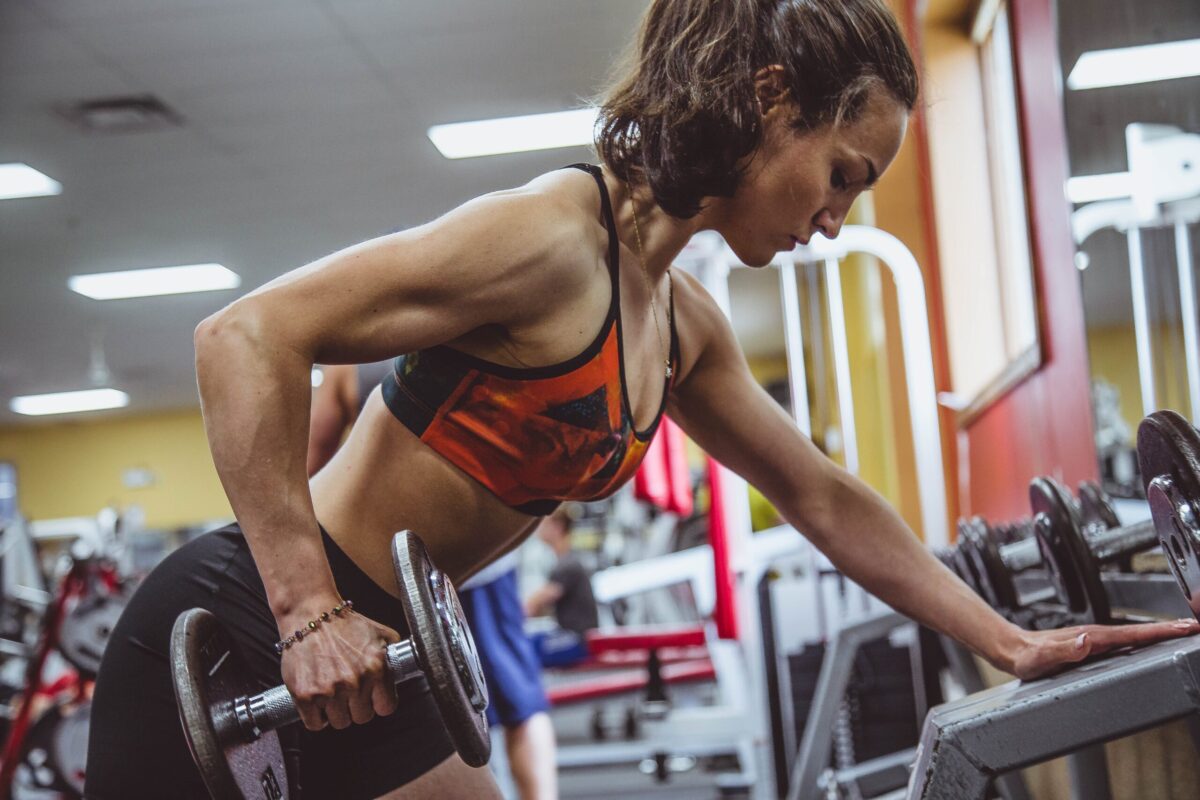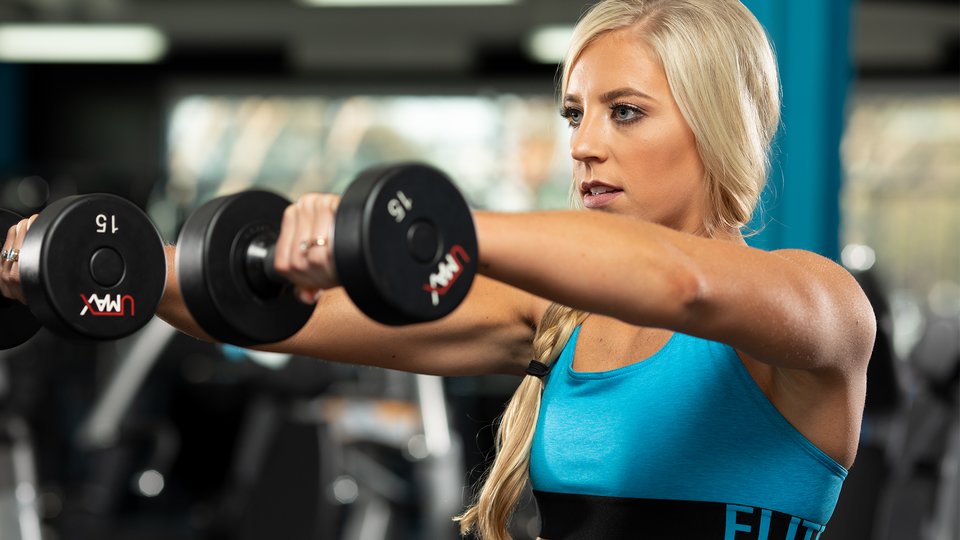Are you looking to build strong, muscular shoulders? Incorporating the right shoulder exercises into your workout routine is essential. Not only do well-developed shoulders improve your physique, but they also play a crucial role in upper body strength and overall athletic performance. But with so many shoulder exercises out there, it can be overwhelming to know which ones to prioritize. That’s why we’ve compiled a list of the 15 best shoulder exercises for muscle and strength. Whether you’re a beginner or an advanced lifter, these exercises will help you pack on muscle and increase your shoulder strength quickly.

Contents
15 Best Exercises for Shoulders
Here are the 15 best exercises for shoulders:
- Overhead Press: This compound movement targets multiple muscles in the shoulder, emphasizing the front deltoids.
- Dumbbell Lateral Raise: A great exercise for targeting the side deltoids and building width in the shoulders.
- Bent-Over Dumbbell Reverse Fly: This exercise targets the rear deltoids and helps improve posture.
- Arnold Press: Named after Arnold Schwarzenegger, this exercise provides a challenging variation of the traditional overhead press.
- Seated Dumbbell Shoulder Press: A seated position allows you to isolate the shoulder muscles and minimize the use of momentum.
- Upright Row: This exercise targets the deltoids as well as the trapezius muscles.
- Dumbbell Front Raise: A simple exercise that targets the front deltoids and helps enhance shoulder definition.
- Push Press: Combining a dip and drive movement with an overhead press, this exercise helps develop explosive power in the shoulders.
- Face Pull: A great exercise for correcting rounded shoulders and strengthening the rear delts.
- Barbell Shrugs: This exercise primarily targets the trapezius muscles, helping to create a strong upper back.
- Cable Lateral Raise: Using a cable machine adds constant tension, making this exercise effective for targeting the side deltoids.

- Push-Up Variations: Push-ups work the entire upper body, including the shoulders, providing a challenging bodyweight exercise.
- Barbell Front Raise: This exercise targets the front deltoids and can be performed using a barbell or other weighted equipment.
- Cable Rope Face Pull: Another variation of the face pull exercise that targets the rear delts and upper back.
- Dumbbell Rear Delt Fly: This exercise isolates the rear deltoids, helping to improve shoulder symmetry.
Factors to Consider Before Starting Shoulder Exercises
By keeping these points in mind, you’ll be able to protect yourself from injuries and optimize the benefits of your shoulder exercises.

1. Start with Light Resistance and High Repetitions:
It’s important to begin your shoulder strengthening program with light resistance and high repetitions, especially if you’re new to shoulder exercises. This approach helps build endurance in the small stabilizing muscles of the rotator cuff, which are prone to injury. By gradually increasing the resistance and repetitions over time, you can safely strengthen these muscles without overloading them.
2. Prioritize Proper Form and Alignment:
Form and alignment are crucial when performing shoulder exercises. Emphasizing the correct posture of your neck, shoulder blades, and arms not only optimizes muscle activation but also helps prevent potential injuries. By maintaining proper form, you’ll ensure that the correct muscles are targeted while minimizing stress on the joints.
3. Consider Your History of Shoulder or Upper Body Injuries:
If you have a history of shoulder or upper body injuries, it’s essential to consult with a physical therapist or orthopedist before starting a shoulder-strengthening program. These professionals can provide personalized guidance to ensure that your exercises are safe and suitable for your specific condition.
Benefits of Shoulder Exercises
Here are some of the key benefits of shoulder exercises:
1. Improved muscle function: Shoulder strength training helps improve both static and dynamic muscle function. It targets the deltoids, which are responsible for various shoulder movements, including raising your arms overhead and rotating them.
2. Increased bone strength and formation: Regular shoulder exercises promote bone health by stimulating the bones in your shoulder girdle. This helps enhance bone density and strength, reducing the risk of fractures or osteoporosis.
3. Enhanced joint range of motion: Shoulder exercises help maintain and improve the flexibility of your shoulder joints. This increased range of motion allows you to move your arms more freely and perform everyday tasks with greater ease.
4. Improved joint stability: Strengthening the muscles around the shoulder joint helps enhance joint stability. This is crucial for athletes involved in throwing or overhead movements as it allows for better control and reduces the risk of injuries.
5. Enhanced athletic performance: Well-developed shoulders contribute to improved athletic performance in various sports. They help generate more torque during throwing movements and allow weightlifters to generate greater force during overhead lifts.
6. Reduced injury risk: By strengthening the muscles and improving joint stability, shoulder exercises help reduce the risk of shoulder and upper body injuries. This is especially important for individuals with a history of shoulder problems or those involved in activities that place high demands on the shoulders.
Frequently Asked Questions
What is the most effective shoulder exercise?
The most effective shoulder exercises include standing dumbbell press, dumbbell push press, cheat lateral raise mechanical drop set, fixed arm front raise mechanical drop set, and dumbbell power clean-over.
How can I bulk up my shoulders fast?
To bulk up your shoulders, focus on shoulder presses (military presses), lateral raises, upright rows, incline chest presses, and supine lateral raises, working across different planes with variation.
How long should a shoulder workout be?
A shoulder workout should be approximately 30-40 minutes, including 10 minutes of stretching the upper body, shoulders, and back muscles, followed by 20 to 30 minutes of shoulder exercises paired with upper body training.

Hello, I’m Ravindra. Over the years, I’ve immersed myself deeply into the world of fitness and health, transforming both my body and mind. Writing has allowed me to share my journey, insights, and expertise with those just starting out and seasoned fitness enthusiasts alike. Beyond just routines and diets, I believe in inspiring others to adopt a holistic approach to well-being.
